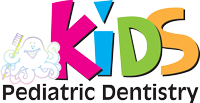Your children’s primary or “baby” teeth begin their formation well before birth. At around 4-6 months, the first primary teeth begin to erupt through the gum: in general the lower central incisors are first, followed closely by the upper central incisors. The primary teeth continue to appear at a varying pace and order, reaching its expected number of 20 at around 3 years of age.
The primary teeth eventually get replaced by the permanent teeth (front 8 teeth at 6-8 years of age, and back cuspids/ molar teeth at around 10-13 years of age). But the primary teeth are very important in the development of the permanent teeth and in the overall oral health of your child growing to become an adult. Neglected cavities and other issues with the primary teeth frequently lead to problems that impact the permanent teeth.
Evolution of the Teeth

The primary teeth are very important for several reasons:
(1) proper development of jaw bones and muscles;
(2) proper eating and chewing;
(3) appropriate spacing for the permanent teeth and guiding them into the right position;
(4) support for correct speech; and
(5) projecting and conveying good appearance that helps nurture self confidence.
The permanent teeth begin appearing at around 6 years of age. In general the first molars and lower central incisors appear first, a process that continues through adulthood (around 21 years of age). Adults have 28 permanent teeth in general, but could have as high as 32 due to the third molars (called wisdom teeth).
